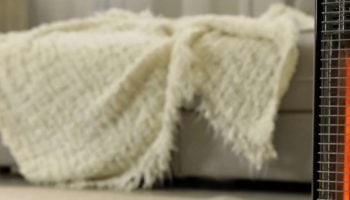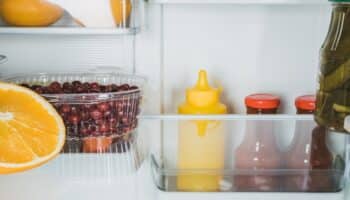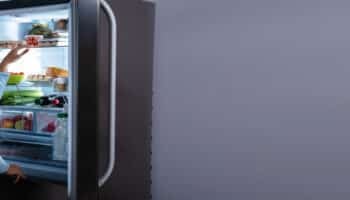Own a fridge? Sure. Know how to get the best out of your fridge’s coldest spots? Maybe you’re not so sure. Appliance Analysts is here to help you figure this one out.
In general, the coldest part of a refrigerator will be at the bottom as cold air sinks (opposite to hot air rises). However, if the fridge has a freezer compartment, that air surrounding that will of course be the coldest area of the refrigeartor.
We’ll be providing you with a handy table for food storage later on in this article, but first let’s look at the 2 most common types of fridges in more detail.
Coldest Spot of a French Door Fridge
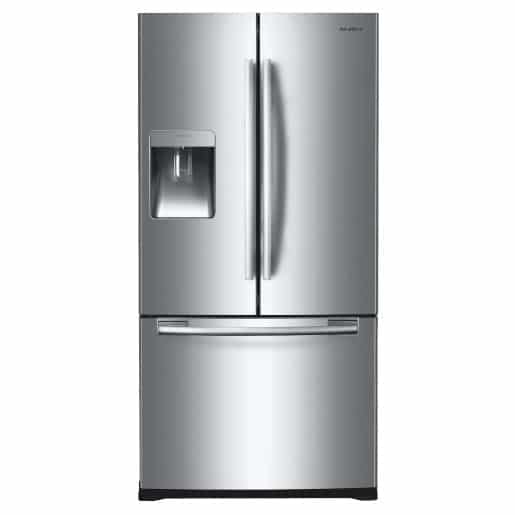
A French Door Fridge has two fridge doors that open outwards towards you, like a French window. The freezer compartment (often pull – out) is at the bottom. So, your fridge compartments are at the top, and your freezer area is at the bottom.
Now, where do you find the coldest areas in a French door fridge?
In a French door fridge, your coldest areas are going to be your middle level shelf, your lower level shelf, and your crisper drawer(s). In fact, the crisper drawers are the coldest area in this type of fridge. In a French door fridge the top shelves and the door compartments run the hottest, also we have a tendency to forget stuff at the back of the top shelf, so it’s best not to store food with a short shelf life in those areas.
Coldest Spot of a Side-by-Side Fridge
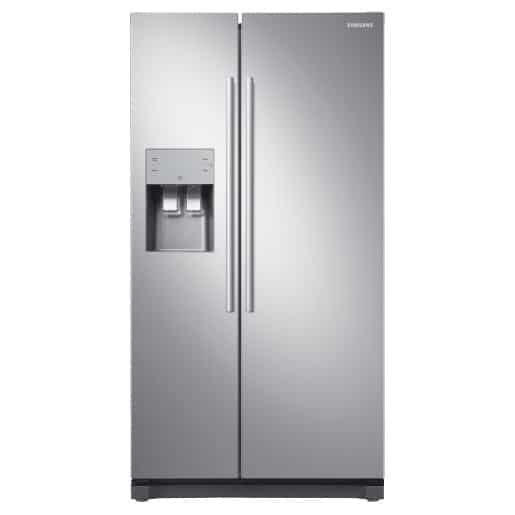
For the coldest spots in a side by side fridge, you’ll also be looking at the middle shelves, the lower shelves and the crisper drawer(s). In fact, the coldest spot in this type of fridge is the drawer or shelf directly above your crisper area.
A Side by Side fridge doesn’t maintain a consistent level of cooling as effectively as the French door type because of its shape. Warm air is less dense, so it rises more towards the top shelves, and there’s simply more room for warm air to rise in a vertically shaped fridge.
The Basic Coldness Principle
The colder the air in your fridge is, the denser it is. The denser it is, the more it sinks towards the bottom of the fridge. That is why, on average, the lower sections of your fridge will always be colder than the upper shelves or the doors.
Frequently Asked Questions
Are Crisper Drawers Colder Than The Rest Of The Fridge?
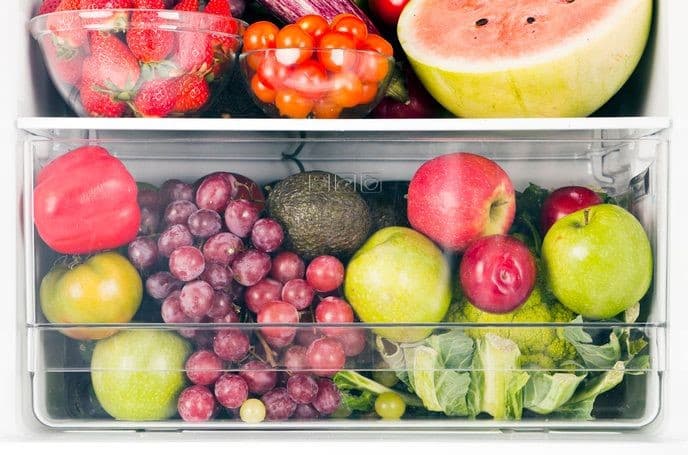
Absolutely! The crisper drawer and the area directly above it is the coldest area of the fridge, so you should always store your most perishable items there.
Which Is The Coldest Fridge Setting – 1 or 5?
If you have a fridge that doesn’t show digital display temperature settings but rather has a dial with the numbers 1 to 5 on it, we’ve got you covered.
On your temperature control dial, the numbers indicate the refrigerating power. So, the higher the number, the higher the coldness! On a dial like that, 5 is your highest number, so it’s your coldest setting for your fridge. As a precautionary measure, always refer to your fridge’s manufacturer’s manual, they’ll give you more information about proper temperature control for your specific fridge.
What If My Fridge Temperatue Goes Past 5?
On some models of fridges, you can have a temperature control dial that shows the numbers 1 to say 7 or even 9.
This is nothing to stress about.
The higher the number on the dial, the colder the setting for the fridge. So, if your highest number is 7, that is the coldest your fridge can get. If your highest number is 9, the same will apply.
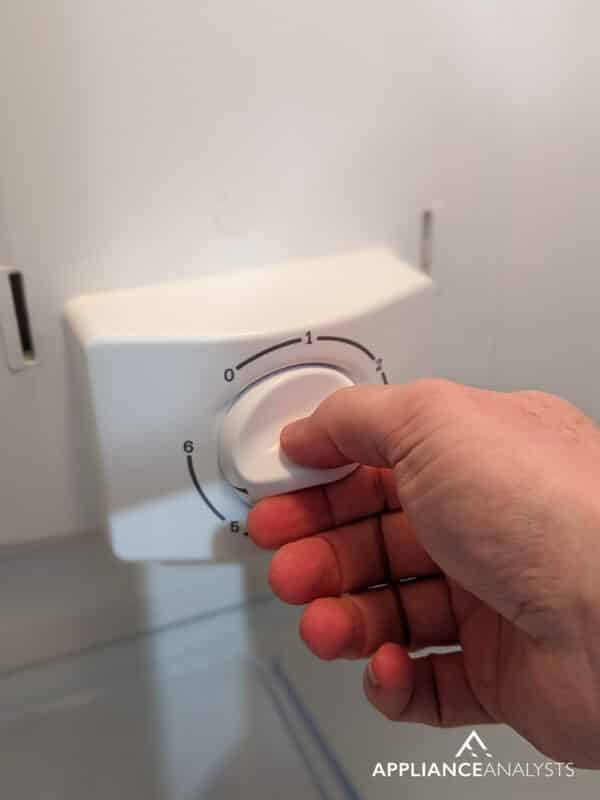
Remember, check your owner’s manual for the fridge if you’re ever unsure or just need to ‘double check’ for your own peace of mind!
How To Keep Your Refrigerator Running At It’s Coldest
A cold refrigerator is a happy refrigerator.
It means that your appliance is working properly, it isn’t experiencing mechanical or electrical issues, and it’s doing its job.
Fridges are truly marvels of modern day engineering, an absolute essential in today’s home, and here are some tips to keep YOURS in tip top shape!
- Let’s cover the basics first: Check that your fridge is properly plugged in, and that the socket is working. A loose plug or a faulty socket will mean that your fridge doesn’t work.
- Check either the digital temperature display or the temperature control dial for your fridge. Your fridge should be running at or below 40 degrees Fahrenheit. The freezer should be at 0 degrees Fahrenheit for optimal performance. If it’s a manual dial, check in your user’s manual but the coldest setting is usually the highest number on the dial.
- Check that the fridge door is closing properly. If the door itself or the door gaskets (those rubber or P.V.C seals) are faulty or obstructed and the fridge isn’t closing fully, cold air is escaping. This will raise the inner fridge temperature, which is what you don’t want.
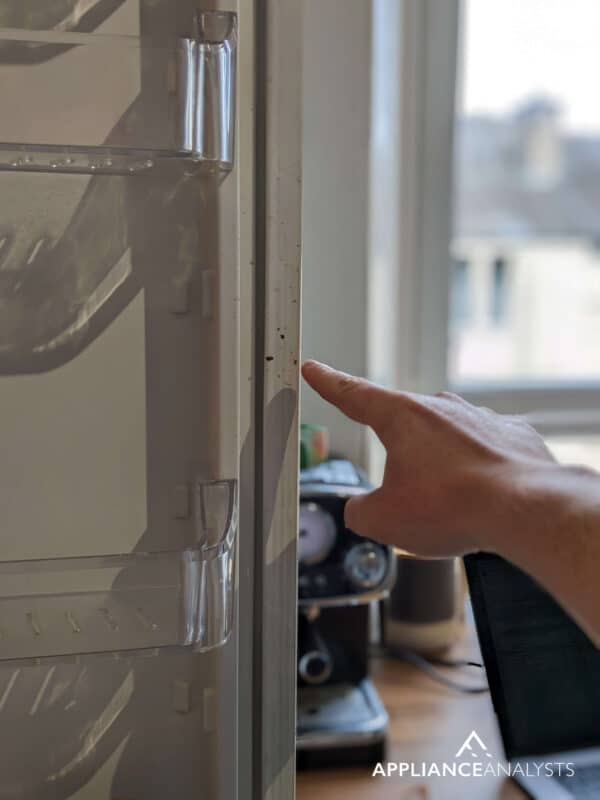
- Have a look at your food in the fridge and see how much there is, and how it’s arranged. The more items in your fridge, the harder the fridge has to work to keep itself cold, so don’t overload! Also, if bottles and jars of food are blocking the air vents in the fridge, the cold air can’t circulate and you won’t get effective cooling.
- Make sure that your fridge is kept in a cool spot of the kitchen, preferably out of direct sunlight. And, make sure that the fridge has enough space around it to ‘breathe’, to circulate air and cool itself. A fridge shouldn’t be kept near sources of heat like ovens or radiators.
- Don’t leave the fridge door open or open it ‘just because’. It’s tempting sometimes to leave the fridge door swinging open while you speedily slap a sandwich together – but it’s no good for your cooling. You’re letting all the cold air out, and all the warm air in, meaning the fridge loses cool and has to work harder to get cold again.
- Keep your fridge well organized – having items exactly where you want them means less time with the fridge door standing open because you can’t find the mustard you saw only yesterday!
- If you own a very large/spacious fridge and have space available, a jug of water kept on each shelf will help to bring down the temperature of the fridge generally.
- Glass containers inside the fridge are better than plastic ones – glass absorbs and holds the cold, meaning that the fridge doesn’t have to work so hard to maintain a cold temperature.
- Try not to put hot food straight into the refrigerator. If the food is hot, the fridge has to work harder to lower the temperature back down. So, leave food to come down to room temperature first before moving it into the fridge. As long as you don’t leave the food standing out all day, this is perfectly safe and better for your fridge.
- Use a thermometer to check the ACTUAL temperature inside the fridge, it may be different to what your display or dial is promising. Double checking with a thermometer allows you to spot a problem if there is one. If it’s not a mechanical or electrical fault that requires repair, you can just adjust the temperature settings accordingly.
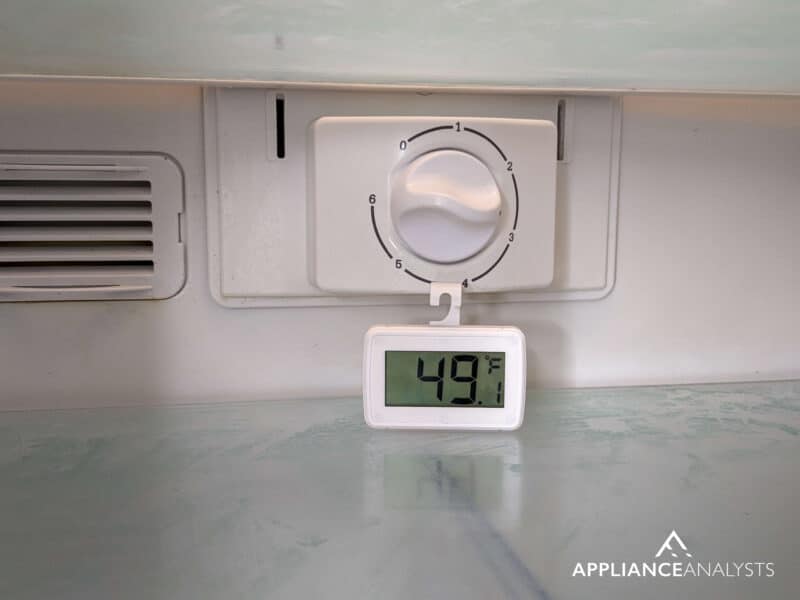
As promised, here’s a handy table below to show you exactly where in the fridge you should put different foods for maximum preservation.
Remember our basic principle – the colder areas of the fridge are always near the bottom, because cold air sinks, so put your most fragile food stuffs there!
| Food Stuff | Where to Store in Fridge |
| • Leftovers/cooked food | → Top shelf |
| • Herbs | → Top shelf |
| • Drinks | → Top shelf |
| • Raw Meat, Poultry & Fish | → Lower shelf |
| • Dairy products | → Lower shelf |
| • Eggs | → Lower shelf |
| • Fruits & Veg | → Sealed/Crisper drawer OR lowest shelf if no crisper area |
| • Condiments & Sauces | → Either in the door shelves or on the lower shelf |
Conclusion
Hopefully this article has been of great help to you in getting the most out of your fridge’s cooling.
Do check out the rest of the website for other informative content on fridges – maintenance, trouble shooting, tips and tricks and more.
Thank you for joining us!



